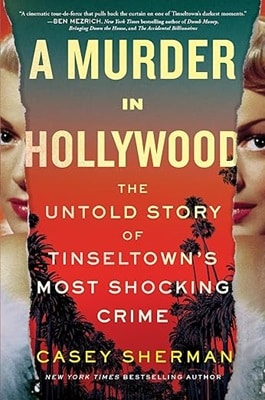Book Review
The Babysitter
You’ve heard the title Don’t Tell Mom the Babysitter’s Dead. An alt-title to the subject of this review could be Do Tell Mom the Babysitter’s a Psycho. The Babysitter: My Summers with a Serial Killer by Liza Rodman and Jennifer Jordan is a riveting True Crime tale that is half Liza’s childhood memoir and half narrative non-fiction, documenting Tony Costa’s metamorphosis into the Cape Cod Vampire of late 1960s.
The story alternates between a first-person account of Liza’s early life and a third-person narrative of Tony Costa’s journey from charming boy to brutal killer. The reader first hears of nightmares plaguing Liza, where she finds herself in a hotel, harassed by a familiar face. It is only when she wakes up and thinks back to her early days, when she strolled the halls of the Royal Coachmen in Provincetown, that she knows the face belongs to her childhood friend and babysitter Tony Costa. Liza realizes how lucky she is to not have been one of Tony’s victims. Her tale is one of abuse and poignancy, often filled with scenes of her philandering mother verbally and physically abusing her. The reader sympathizes for Liza and her younger sister Louisa, both of them in grade school, as they struggle with their volatile mother, after their father abandons them, only to return haphazardly years later, but never setting foot inside their mother’s house.
Liza’s and Louisa’s mother is a schoolteacher on the mainland, but in summer the girls are taken to Provincetown, so they and their mother get to spend time with a family friend, Aunt Joan. Aunt Joan owns the Royal Coachman, a popular seasonal hotel, where a Tony Costa performs odd jobs. Wanting to carouse town for wealthy suitors, Liza’s mother lets her two children accompany Tony on his job-related errands, including runs to the dump, to the store, or just for entertaining the two for a couple hours, getting ice cream or popsicles at the local drug store and observing eccentric inhabitants of a town known for its budding bohemian society, gay community, hippie enclaves, and aloof tourists.
During summers together, Liza notices Tony’s kindness towards her and Louisa, but also oddities in his personality and how he always hangs out with younger crowds and likes to take people to his wooded hideaway. It is not until Tony stops hanging around the two sisters that Liza hears of his arrest for multiple homicides of young women. This news reminds Liza of the irony of their relationship. Where Tony made her feel loved and wanted, an apathetic self-absorbed mother failed to heed the slightest warning signs.
Narrative portions of the book follow the life and unraveling of Tony Costa. Born to a loving mother and father, Tony grows up with inner turmoil. His father ends up dying, serving in WWII, and his stepfather is not the best replacement. Tony fixates on his real father, the war hero, while also facing trauma of being raped by an older high-school age acquaintance. Despite these burdens, Tony falls in love with his high-school sweetheart, Avis, and the two get married, have two children, and settle in Provincetown. Tony’s and Avis’s relationship is quickly strained when he struggles to hold down steady work and gets into drugs, hanging out with young hippies.
Besides odd jobs and drugs, Tony enjoys painting. He builds a studio room in the basement with two padlocks on the door. Not until later are the grotesque “art pieces” discovered inside that locked room. Avis and Tony eventually split and a handful of young women he woes begin disappearing. It isn’t until two women from Rhode Island vacation to the Cape where Tony makes mistakes that have him cornered by law enforcement, victims’ families, and psychiatrists. This young odd-jobber, hip with the bohemian Provincetown community, becomes spotlighted on the front page of the Cape Cod papers for anything but summer fun.
Rodman and Jordan write compellingly and sensually. The reader is intrigued by the research and detail of the time period and unfolding of events in the babysitter’s and Liza’s lives. The 1960s island atmosphere is evinced with its small-town feel, influx of free-loving hippies, successful and experimental artists like John Waters, and city-folk looking to unwind on sandy, breezy beaches. However, Liza’s story is a bit redundant in its morosity. The reader is inundated with her mother’s lack of concern, verbal assaults, and backhand slaps. To reconcile this superfluity, the reader is immersed in a fascinating decade, with an engrossing account of how drugs were plentiful, youth were reckless, some children were raised offhand, and amidst the chaotic social and cultural zeitgeist, a killer and babysitter could walk hand in hand with a child, innocent of the times.
More Crime
Advertisement







